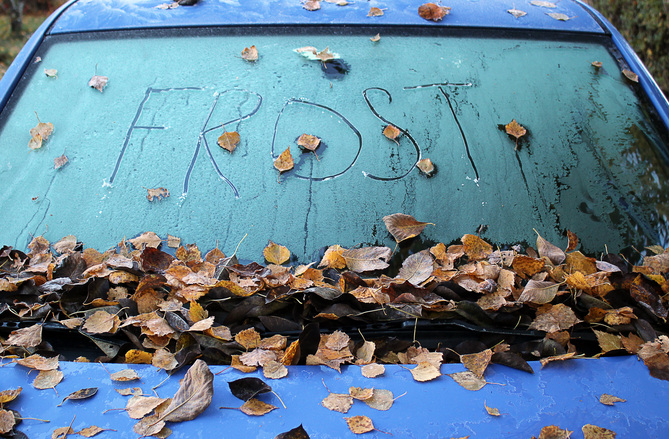As the leaves change and a familiar chill fills the Michigan air, it’s the perfect signal to prepare for the months ahead. While you’re pulling out sweaters and winter coats, don’t forget that your vehicle needs to get ready, too. Proactive fall car care is the single best way to ensure your car is safe, reliable, and prepared for the challenges of an upcoming Michigan winter.
Harsh temperatures, icy roads, and heavy snowfall can take a serious toll on a vehicle. By addressing a few key areas now, you can prevent inconvenient breakdowns and enhance your safety on the road. This guide covers the five most critical checks to perform this fall, helping you transition smoothly into the colder season.
Your tires are the only part of your vehicle that touches the road, making them a top priority for Michigan Fall and Winter . As temperatures drop, road conditions can change in an instant. Here’s how to ensure your tires are ready for the challenge.
Adequate tread depth is crucial for gripping wet, snowy, or icy surfaces. Worn-out tires, often called “bald,” significantly increase your risk of hydroplaning and losing control.
Did you know that for every 10-degree drop in temperature, your tire pressure can decrease by about one PSI (pound per square inch)? Underinflated tires wear out unevenly and reduce your vehicle’s handling and fuel efficiency. Check your tire pressure weekly during the fall and winter, inflating them to the manufacturer-recommended level found on the sticker inside your driver’s side door jamb.
Your ability to stop safely is non-negotiable, especially when slick conditions reduce traction. A thorough brake inspection is a cornerstone of fall car maintenance.
Your car often gives you clues that its brakes need attention. Don’t ignore them.
Brake systems involve several components, including pads, rotors, and drums, all of which wear down over time. During an inspection, a professional technician will measure the thickness of your brake pads and assess the condition of your rotors. This ensures your vehicle can achieve the shortest possible stopping distance, a critical factor on icy roads. For reliable brake service that Westland drivers trust, schedule a check-up with our experts.
Cold weather is incredibly tough on a car battery. The chemical reactions that generate power slow down in the cold, and your engine requires more energy to turn over. A weak battery that worked fine in the summer might fail you on the first freezing morning.
A professional load test is the most accurate way to determine your battery’s health and its ability to hold a charge. This quick test can tell you if your battery is ready for winter or on the verge of failure. We also check for “cold-cranking amps” (CCA), which measure a battery’s ability to start an engine in cold temperatures.
Corrosion around the battery terminals can prevent a solid electrical connection, hindering its ability to start your car or recharge properly. We recommend cleaning the terminals and ensuring all connections are tight.
Most car batteries have a lifespan of 3 to 5 years. If your battery is approaching this age, it’s wise to have it tested before winter arrives. Replacing it proactively can save you from being stranded in the cold.
Your vehicle’s heating system isn’t just for comfort; it’s essential for visibility and safety. A functioning defroster is critical for clearing frost, ice, and condensation from your windshield.
Turn on your heat and defrost now to confirm they’re working correctly. Make sure air is blowing forcefully from the correct vents. If the air isn’t getting hot or the fan isn’t blowing strongly, it could signal issues with the thermostat, heater core, or blower motor. A clogged cabin air filter can also restrict airflow, so have it checked and replaced if necessary.
Never start driving until your windows are fully defrosted. Peering through a small “bird’s-eye view” hole in the ice is extremely dangerous and limits your peripheral vision. Allow your vehicle enough time to warm up and completely clear the glass. Using a quality ice scraper and winter-rated washer fluid will speed up the process.

Your view of the road can be obscured quickly by slush, salt spray, and snow. Worn wiper blades and empty washer fluid reservoirs create a dangerous situation.
Standard wiper blades can become stiff and ineffective in freezing temperatures. Consider upgrading to winter wiper blades, which are designed with a rubber coating that prevents ice and snow from building up on the blade frame. Regardless of type, wiper blades should be replaced every 6 to 12 months. If they leave streaks or skip across the glass, it’s time for a new pair.
Top off your washer fluid reservoir with a formula rated for freezing temperatures (typically down to -20°F or lower). Summer fluid or plain water will freeze in the lines, leaving you unable to clear your windshield when you need it most. Also, check that the spray nozzles are clear and properly aimed at the glass.
While the five areas above are critical, a few other checks complete your vehicle’s fall car maintenance checklist:
Preparing your vehicle now is the best way to ensure a safe and stress-free driving season. Don’t wait for the cold to set before you find a problem.
Our team of certified technicians is here to provide comprehensive fall car care and get you ready for the road ahead. From expert tire and brake inspections to battery tests and heating system checks, we are your trusted source for Westland auto service.
Posted In: Car Care, Car Maintenance
Tags: Auto inspecition, brake services, car heater, Check Battery, defrost windshield, winterizing automobile, wiper blade replacement